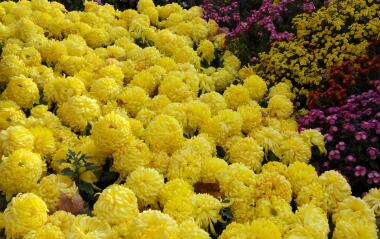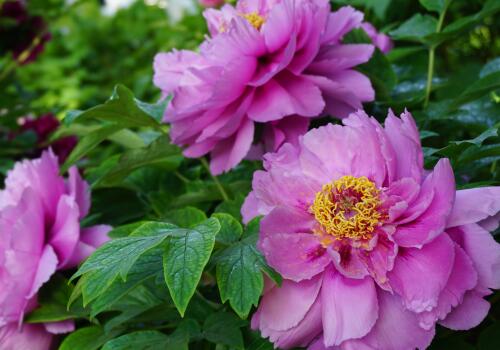When will spring peanuts be sown? With high-yield planting techniques
Peanut is a nutrient-rich food, there is "vegetarian meat" laudatory name. Spring peanuts are also what we call peanuts sown from "the beginning of spring" to "the beginning of summer." The growing season of peanut is long in southern China, and all kinds of peanut can be produced. The rotation planting area of paddy field is large, and pearl bean varieties are mainly planted. When will spring peanuts be sown? What cultivation techniques can you master to produce high yields?

When are spring peanuts sown?
1. Solar terms
Generally speaking, the temperature will gradually stabilize after the arrival of the festival suitable for peanut sowing. For areas where the festival has not arrived, although the temperature is very high recently, it is not recommended to sow. For example, early-maturing peanuts in Northeast China are generally sown in the middle and early May.
2. Temperature 10-15 days after sowing
Peanut emergence days and the average temperature is closely related, after sowing 15 degrees need 20 days, 23 degrees need a week, about one degree temperature difference, emergence time wrong one and a half days.
3. Spring peanuts are properly sown late
In the process of planting peanuts, the difference of 25 days in the suitable sowing period of peanuts ripens together, mainly because the sowing time is early, the temperature is low, and the growth is slow in all aspects, while the temperature is high and the growth is faster in the late sowing time, so the difference in maturity period is not big.
High-yield planting techniques of spring peanut
1. Select fine varieties
In the aspect of variety selection, we should reasonably select fine variety types and varieties according to market requirements, cultivation methods, sowing dates and other factors. In many areas, peanut seeds are kept year after year, and their habits are seriously degraded. It is still necessary to replace seeds properly. Seed selection should be adapted to local conditions, mainly local varieties, cross-regional varieties can be properly tested, and then introduced.
Improved seed is the internal cause of yield increase, and selecting improved seed is the basis of yield increase. When selecting seeds, large and plump seeds should be selected as seeds. It is advisable to select high resistance, suitable for dense planting and high and stable yield.
2. Create high-yield soil and apply fertilizer scientifically
Spring sowing high-yield cultivation field should choose deep soil layer, fertile soil, many years without peanut (after 3~5 years rotation) grain field or vegetable field. Autumn tillage or winter tillage as early as possible after harvest, with a depth of 25 cm. Fertilization is mainly organic fertilizer, supplemented by chemical fertilizer, mainly base fertilizer, supplemented by topdressing.
3. Establish a reasonable group structure
Spring sowing open field cultivation is generally 10 000 holes per mu (20 000 million plants). When sowing, we should select first-class large-grain seeds with strong vitality as seeds, double-seed hole sowing, improve the quality of sowing, and make the seedlings reach Qi, complete, uniform and strong.
4. strengthen field management
The plants of spring-sowing peanut population in open field were easy to overgrow in early stage and premature senescence in late stage. Therefore, the general principle of field management is to control the former and protect the latter to ensure stability for a long time.
(1)prophase management
Through early clearing, deep weeding, squatting seedlings to promote early hair. Open field cultivation should be in time after the peanut seedlings are basically neat. Between seedling emergence and initial flowering stage, the cultivation method of deep hoe furrow and shallow hoe ridge back should be adopted for 2~3 times in total, so as to improve the temperature of soil moisture and prevent drought, promote the deep penetration of main roots, early emergence of lateral roots and main fruiting branches, and lay the foundation for dense nodes, strong branches, more flowers and even flowers.
(2)medium-term management
Mainly through fertilizer and water management, disease prevention and pest control, chemical regulation and other measures to control trees to maintain stability and growth. Peanuts are sensitive to soil drought at flowering and should be irrigated in time when leaves are slightly wilted (turning white) at noon. Leaf spot control should start from the early stage of the disease, spray foliar protectants every 10~15 days, such as Bordeaux mixture, etc., or spray fungicides such as carbendazim, chlorothalonil, mancozeb, etc. according to the disease type.
If the plants tend to grow excessively, spray 1000 mg/kg B9 aqueous solution or 50~100 mg/kg paclobutrazol aqueous solution on the leaves in time, spraying 50~75 kg solution per mu.
(3)post-management
Mainly through fertilizer and water management, leaf protection to prevent premature aging. At the mature stage of full fruit, topdressing should be carried out outside the root. Generally, 5000 times of root and fruit strengthening functional fertilizer and 2%~3% calcium superphosphate aqueous solution should be sprayed on the leaves every 7~10 days for 3~4 times in total. If the soil moisture content of 0~30 cm soil layer is lower than 50% of the maximum water holding capacity, the fruit should be lightly watered with small water. When soil moisture is more, attention should be paid to drainage to prevent rotten fruit.
Time: 2019-03-13 Click:
- Prev

When do chrysanthemums sow? How is the planting benefit?
As one of the top ten traditional famous flowers in China, chrysanthemum has a long history of planting. Nowadays, chrysanthemum has become one of the main flowers used in art and decoration. In daily chrysanthemum planting, its cultivation and management techniques must be applied scientifically to ensure that chrysanthemum planting can achieve the desired results.
- Next

Introduction to the planting time and method of peony seed of "national color Tianxiang"!
Peony flowers are colorful and fragrant, not only large petals with many levels, but also magnificent, with the title of national flower and king of flowers. The following is to introduce the planting time and methods of peony seeds, so that you can grow this beautiful peony at home! Introduction to the basic situation of Peony
Related
- Fuxing push coffee new agricultural production and marketing class: lack of small-scale processing plants
- Jujube rice field leisure farm deep ploughing Yilan for five years to create a space for organic food and play
- Nongyu Farm-A trial of organic papaya for brave women with advanced technology
- Four points for attention in the prevention and control of diseases and insect pests of edible fungi
- How to add nutrient solution to Edible Fungi
- Is there any good way to control edible fungus mites?
- Open Inoculation Technology of Edible Fungi
- Is there any clever way to use fertilizer for edible fungus in winter?
- What agents are used to kill the pathogens of edible fungi in the mushroom shed?
- Rapid drying of Edible Fungi

